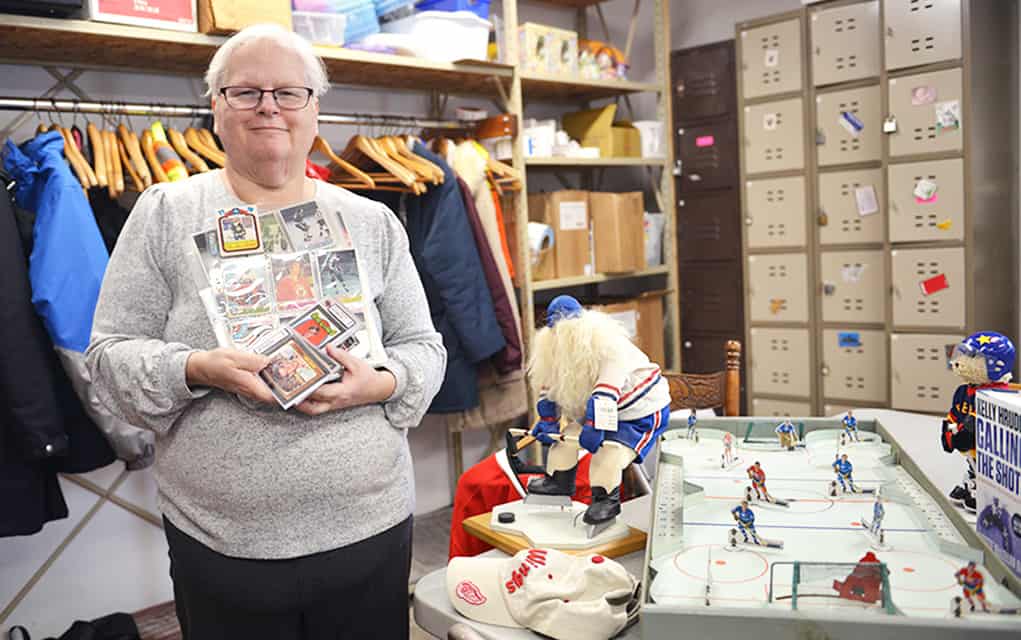There was a time when Elmira was home to open-air pits containing some of the worst, most hazardous chemicals known to man. Stored in so-called retention ponds on the former Chemtura property on the east side of town, the waste pits would eventually become ground-zero for the water crisis that hit Elmira in 1989.
When it rained, the ponds poured their toxic effluence into the surrounding watershed. Some of the toxic mixture was washed away into the Canagagigue Creek over the decades, contaminating the communities living downstream. Other elements leeched directly into the town’s rich underground aquifers; to this day, the water under Elmira residents’ feet has been rendered undrinkable since N-Nitrosodimethylamine (NDMA) was first detected in wells in 1989, when the chemical plant was run by Uniroyal.
But other remnants of waste-filled ponds are suspected to have pooled into the low-lying areas on the chemical plant property itself, now owned by Lanxess, where they remain at risk of continuing to drain into the creek. At least, that is the concern of members of the Technical Advisory Group (TAG), the citizens’ committee which oversees the ongoing cleanup of the 1989 crisis.
Continuing on for another round of talks last week, TAG repeated calls for testing of the “gap” area on Laxness property.
“Here’s our gap area that we want tested, and we’re carrying this on for another meeting discussing the gap,” said TAG member Joe Kelly at a meeting February 28 with GHD, an engineering and environmental consulting service hired by Lanxess.
“I’m willing to go out there in my snowsuit and long boots and point it out. It’s not that hard to do, and delaying it. I don’t know. It’s just craziness to continue this discussion over and over again,” he added, voicing the frustration of his fellow TAG-members at the lack of progress on testing the gap.
However, Lanxess disputes the groups’ claims. The chemical company, which took over cleanup operations for the site after the acquisition of the plant’s previous owners in 2016 (the sale was finalized the following spring), has said the area has been sufficiently probed for chemicals, and showed no detections of “DDTs, dioxins or furans.”
Last month, the company provided TAG with data from samples which they said proved additional tests weren’t needed.
“Surface soils, subsurface soils and groundwater samples from the Lanxess portion of the gap have been collected and submitted for testing in the past (sampling dates range from 1998-2011),” said Lanxess’ spokesperson Patrick Tobin and environmental remediation manager Ramin Ansari in a statement to the Observer. “The historical data indicated that this area of the Lanxess property is not impacted. We believe the area does not warrant any additional testing.”
But TAG members took issue with the data provided, saying the soil sampling was problematic even at the time it was undertaken.
“I remember back to some of these things, and I do recall the composite sampling that was done. And I seem to recall that the committee at the time was not happy with the composite sampling, and that additional samplings were strongly requested,” said TAG member and former Woolwich councillor Pat McLean.
“So to use this composite sampling as a justification for not doing anything further in the gap just doesn’t hold water.”
Despite the seeming impasse, both TAG and Lanxess agreed they would survey the area of the gap together on foot at the first snowmelt, and search for a lowest point of elevation in the gap to test.
“I think we would be very open to doing that. We’re kind of between the meeting and that happening,” said TAG chair Tiffany Svensson in an interview with the Observer.
Lanxess also noted it was open to conducting further testing if it can be justified.
“Lanxess considers sustainability and the environment matters of high importance,” said the company’s statement. “We have a considerable amount of resources currently supporting the Elmira remediation, which includes the sampling of this area. We will discuss any new information that comes forth to justify the need for additional sampling.”









